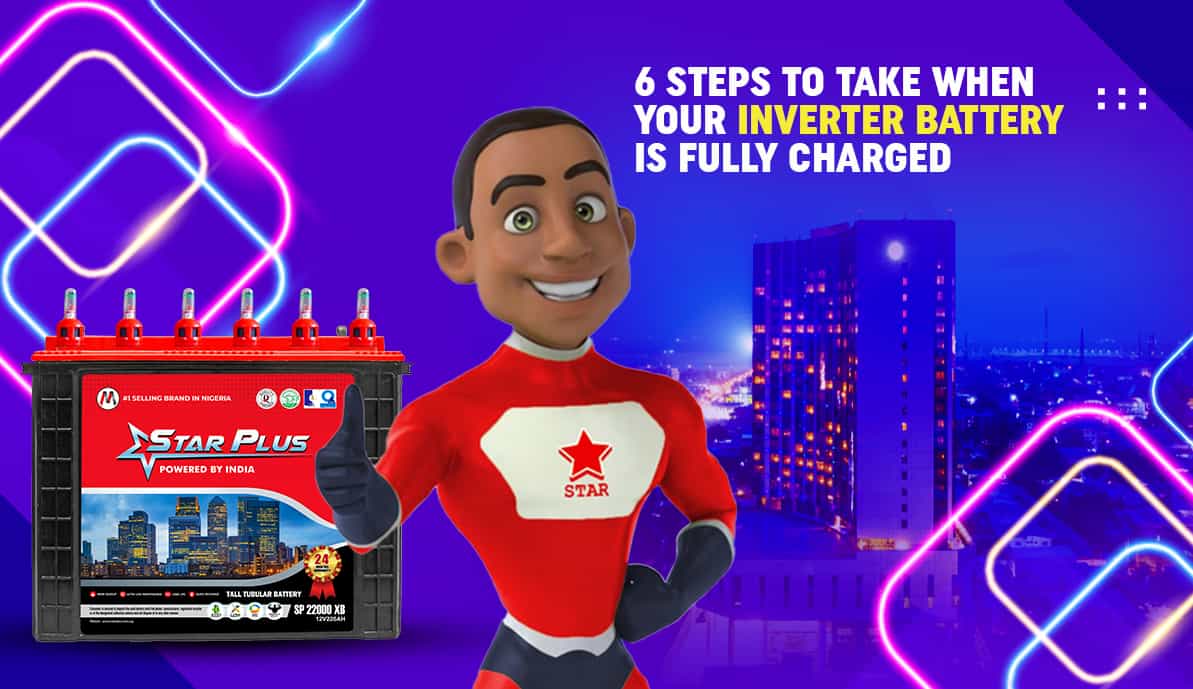Why is maintenance so essential? Just ask Aisha, a 27-year-old working professional who learned the hard way.
For two years, Aisha relied on tubular inverter batteries from Star Plus Battery. Despite her experience, she continued facing power issues. The reason? Poor maintenance. Without the proper upkeep, her batteries failed to perform optimally, leading to frequent replacements and added frustration.
That’s when a quick consultation with our experts made all the difference.
We provided Aisha with simple, actionable tips, especially on what to do once her inverter battery was fully charged. That small step became a game-changer. With consistent care and proper post-charging practices, she extended the life of her battery, avoided unnecessary expenses, and enjoyed a reliable power supply.
What should I do after your inverter battery is fully charged? You’re not alone, and we’re here to help.
Check out our latest blog for a complete guide on post-charging battery care and best practices.
How to Know If Your Inverter Battery is Fully-Charged?
Recognising when your inverter battery is fully charged is necessary to avoid any overcharging. You can check the following steps for easier tubular battery maintenance:
1. Check the Battery Indicator Light
Check when the indicator light of the inverter changes colour. Once it changes colour, it will indicate that the battery is fully charged. Generally, a green or blue light denotes that an inverter battery is fully charged.
2. Use a Multimeter to Measure the Voltage
We recommend keeping a multimeter to check the battery voltage periodically. A reading between 12 and 14 volts generally denotes that he battery is fully charged.
3. Monitor Battery Voltage Display on Inverter
If your inverter has a built-in voltage display feature, it might show the battery’s current charge level. Generally, a charge of 12 to 14 volts indicates that your battery is fully charged.
Apart from the steps mentioned above, if you face any difficulties in understanding whether your inverter battery is charged or not, connect with us.
Here’s what you need to do after your inverter battery is fully charged.
Want to Buy Tubular Inverter Battery for Your Home and Office?
Steps to Take After Your Inverter Battery is Charged
Spending some time on inverter battery care is necessary to keep your tubular inverter battery safe, efficient, and long-lasting. Consider the following steps on how to take care of it after fully charging it:
1. Monitor the Charge Level
One of the easiest ways to maintain your inverter battery is to monitor their State of Charge (SOC). You can check the SOC levels by using a battery monitor. Maintain proper logs of the SOC levels over months to predict battery performance issues early.
2. Turn Off the Mains (if Applicable)
If you’re using a manual charging setup rather than an automatic inverter system, it’s essential to turn off the mains after the battery is fully charged. This prevents overcharging, which can significantly shorten the battery’s lifespan and potentially cause safety issues. Automatic systems usually regulate this on their own, but manual setups require extra attention.
3. Inspect for Overheating
Carefully touch the battery casing to check for any signs of overheating. A warm battery is normal during charging, but if it becomes excessively hot, it may indicate overcharging or internal damage.
Overheating should never be ignored, as it can lead to reduced efficiency or even pose a fire hazard. If the battery is hot, allow it to cool down and consider having it checked by a technician.
4. Top Up Distilled Water (For Lead-Acid Batteries)
As you focus on the maintenance of tubular battery, topping up distilled water will be necessary. If you’re using a traditional lead-acid battery, open the caps and check the electrolyte levels. The fluid should be at or above the minimum level, but not overfilled.
If it’s low, top it up with distilled water only; never use tap water, as it contains minerals that can damage the battery. This step is not necessary for sealed or maintenance-free batteries, such as gel or lithium-ion types.
5. Clean the Terminals
Corrosion can accumulate on the battery terminals over time, potentially affecting the battery’s performance. Inspect the terminals for any white or green residue. If you find corrosion, clean it with a paste of baking soda and water or a specialized battery terminal cleaner. After cleaning, apply a thin layer of petroleum jelly to the terminals to prevent future corrosion and ensure good electrical contact.
6. Test Backup Performance
Finally, test the battery’s backup performance by turning off the main power supply, simulating a power outage. Observe how well the inverter powers your connected devices. This helps confirm that the tubular inverter battery is functioning correctly and gives you a sense of how long it can sustain your essential appliances during a real power outage.
Conclusion
By following these simple yet effective inverter battery maintenance tips, you can optimise the longevity and performance of your battery. At Star Plus Battery, we provide you with post-sales support and comprehensive guidance on installation and maintenance. If you have any questions, please don’t hesitate to contact us for support.
If you are facing issues with power compatibility, battery maintenance, or choosing the best battery, we can help you. Comment your needs below and our expert team will get back to you as soon as possible.



0 Comments